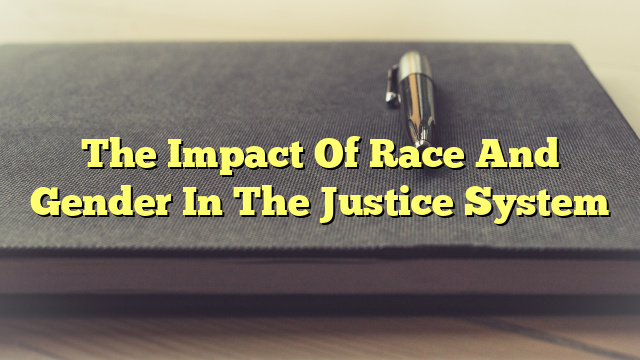- Overview
- Race and the Criminal Justice System
- Gender and the Criminal Justice System
- Examples of Gender Bias in the Criminal Justice System
- Implications for Criminal Justice Reform
Overview
The American criminal justice system is composed of three main parts: law enforcement, courts, and corrections. While the criminal justice system is meant to treat all people fairly and impartially, the reality is that race and gender do play a role in how people are treated by the system. This article will explore the ways in which race and gender might influence the criminal justice system, as well as potential implications for criminal justice reform.
Race and the Criminal Justice System
The criminal justice system has been accused of having a racial bias, particularly when it comes to drug offenses. According to a survey conducted by the U.S. Bureau of Justice Statistics, African Americans were incarcerated at nearly six times the rate of white people, and Hispanics were incarcerated at nearly three times the rate of white people in 2018. Furthermore, African Americans were 2.5 times more likely to be arrested than white people.
In addition to the disproportionate rates of incarceration and arrest, racial bias is also evident in the sentencing phase of the criminal justice process. For example, a 2002 study found that African American defendants were more likely to receive longer prison sentences than white defendants for the same crime. Similarly, a 2007 study found that African American defendants were more likely to receive the death penalty than white defendants for the same crime.
Gender and the Criminal Justice System
Gender also plays a role in the criminal justice system. How gender differences affect the criminal justice system can vary based on the type of crime committed. In general, men are more likely than women to be arrested, convicted, and incarcerated. This is largely due to the fact that men commit the majority of violent and property crimes.
However, when it comes to certain types of crimes, such as drug offenses, gender differences in outcomes become more pronounced. For example, women are more likely to be sentenced to probation rather than prison for drug offenses, while men are more likely to receive longer prison sentences or harsher punishments such as mandatory minimums.
Is there gender bias in the justice system? Yes, gender bias is an issue in the justice system. Women are often treated differently than men in terms of sentencing, even for similar crimes. Additionally, women are less likely to be released from prison than men, and women in prison often receive fewer services and opportunities for rehabilitation than men.
Examples of Gender Bias in the Criminal Justice System
One example of gender bias in the criminal justice system is the fact that women are more likely to be sentenced to probation rather than prison for drug offenses. Additionally, women are less likely to receive plea bargains for the same types of crimes as men.
Gender bias is also evident in the way that women are treated during their time in prison. Female prisoners are often subjected to harsher punishments than male prisoners for minor offenses, and they are less likely to receive the necessary medical and mental health services that are available to male prisoners.
Implications for Criminal Justice Reform
The disproportionate incarceration rates for people of color and gender bias in the criminal justice system have serious implications for criminal justice reform. To create a more equitable system, it is important to address the underlying causes of racial and gender disparities in the criminal justice system, such as poverty and unequal access to education. Additionally, sentencing reforms such as eliminating mandatory minimums, reducing the use of cash bail, and expanding alternatives to incarceration can help to create a more equitable system.
Ultimately, it is important to recognize the ways in which race and gender can influence the criminal justice system and to work towards creating a criminal justice system that is equitable and just for all.
Conclusion
The criminal justice system is an integral part of American society and is meant to be a fair and impartial system. However, the reality is that race and gender can have a significant impact on how people are treated by the system.


Despite race and gender disparities, I still don’t believe justice is compromised.